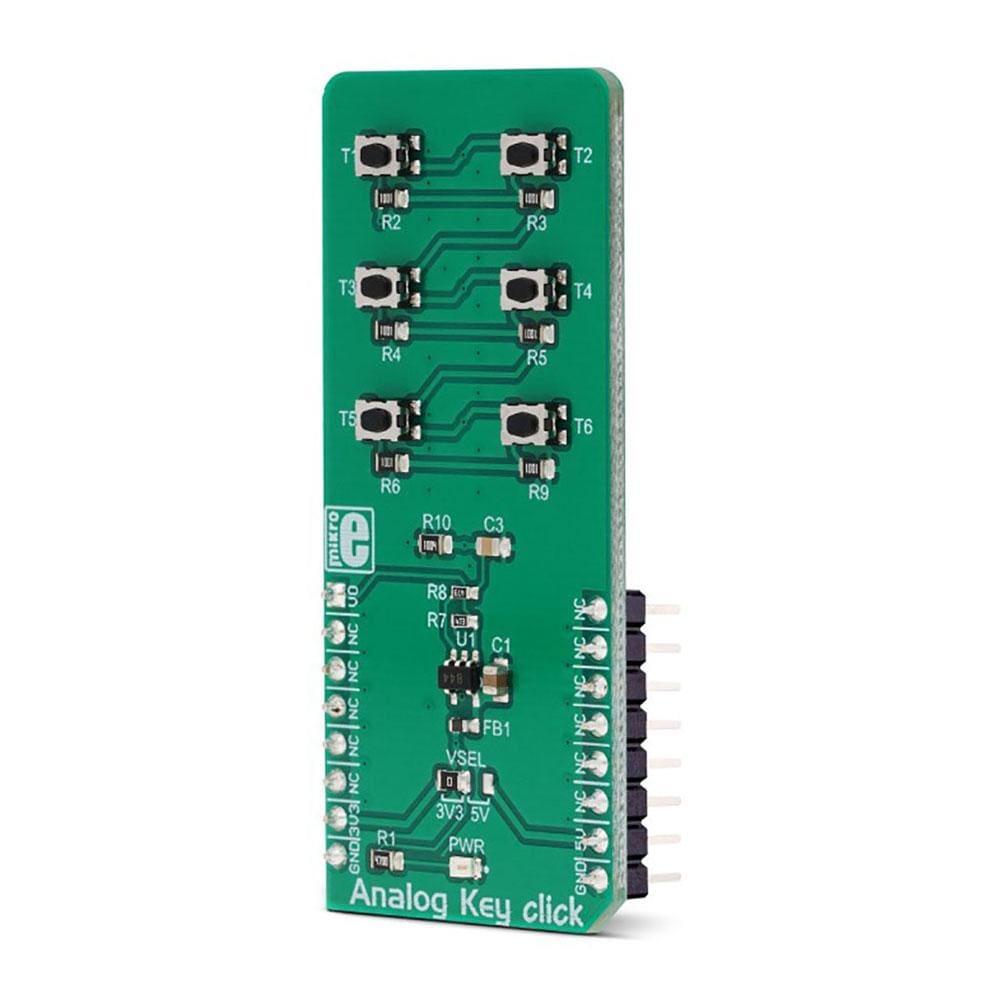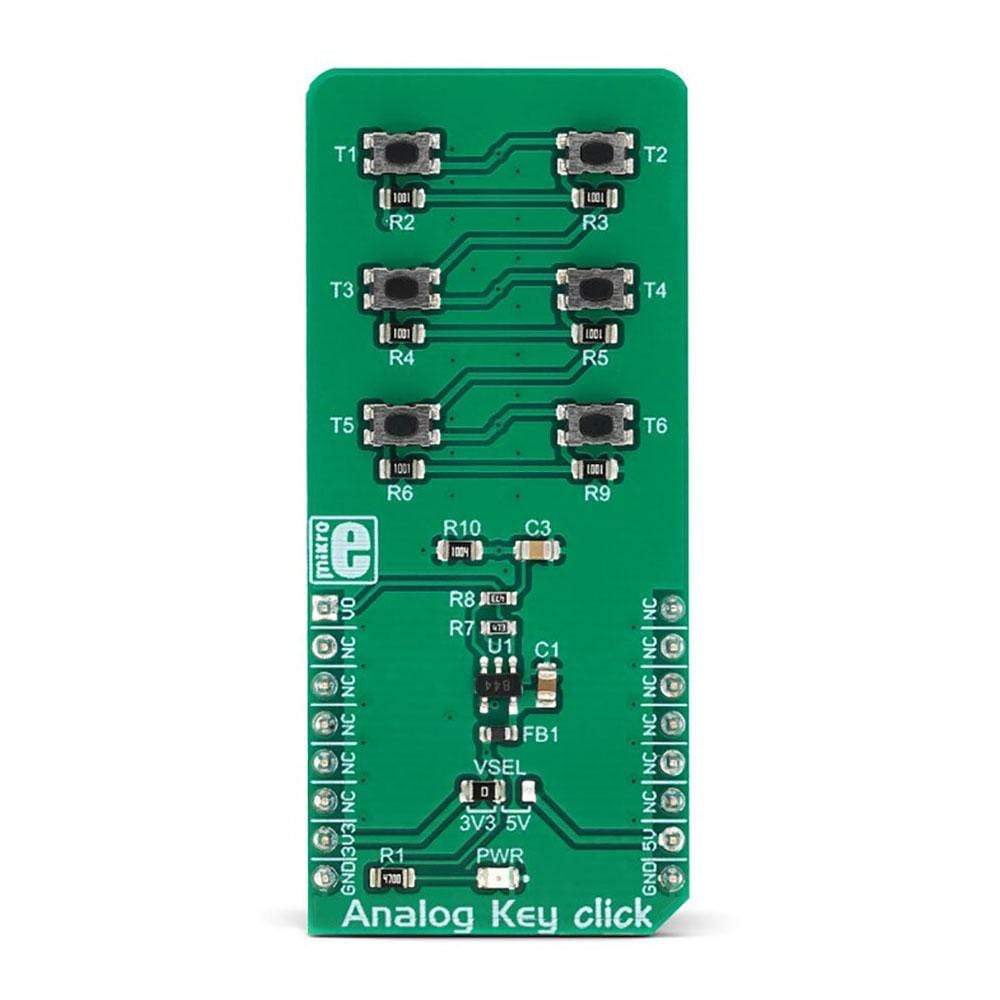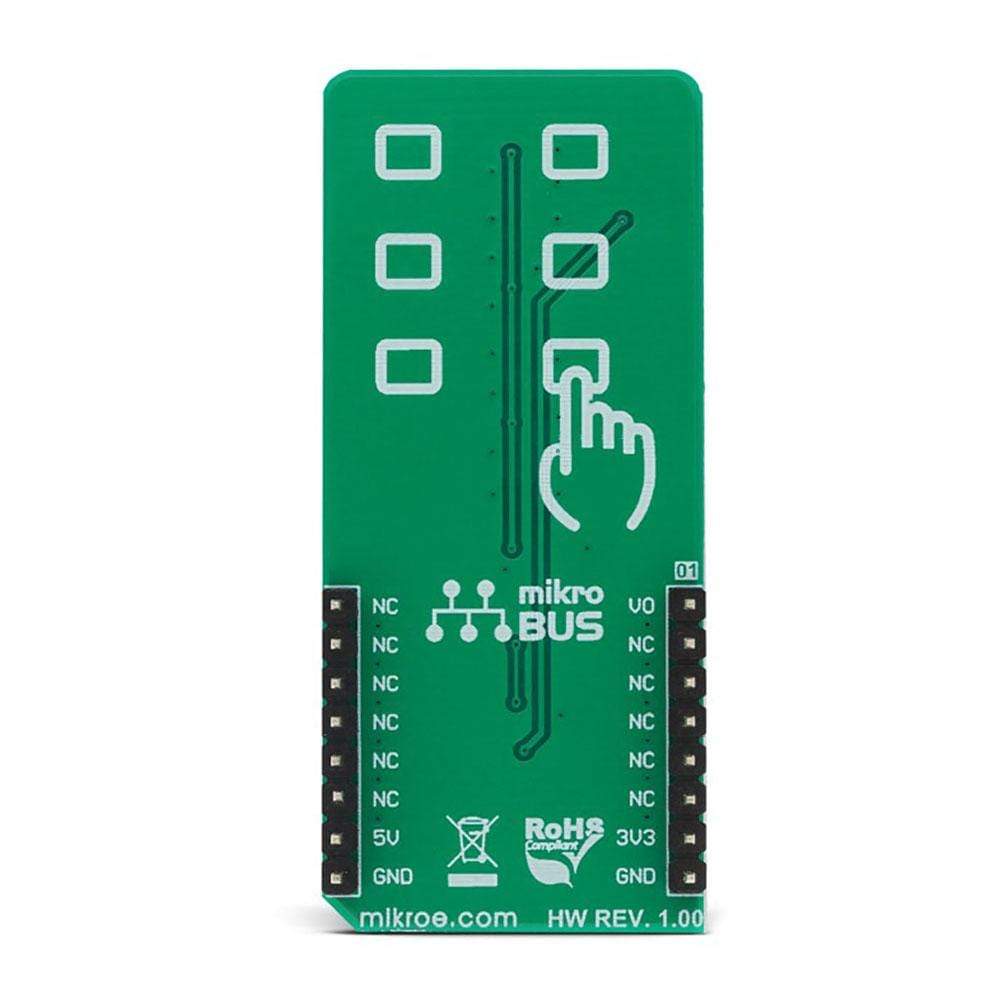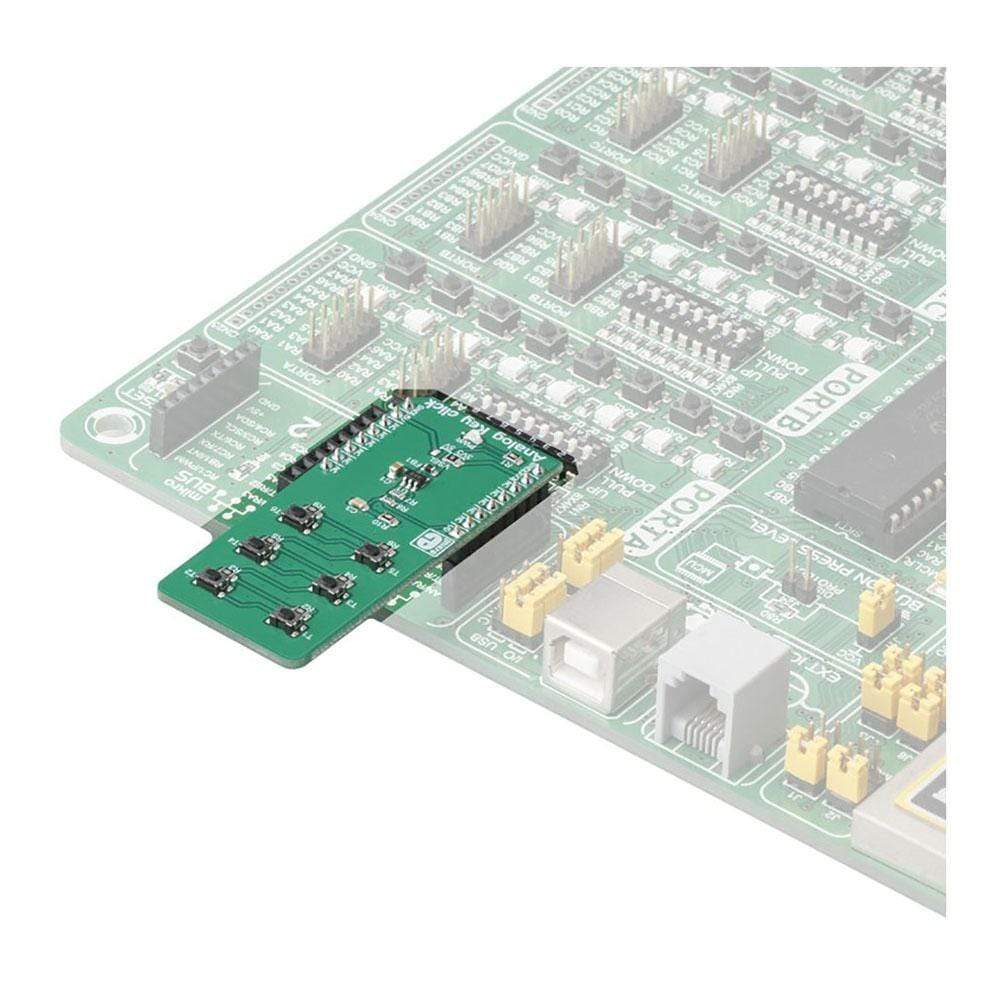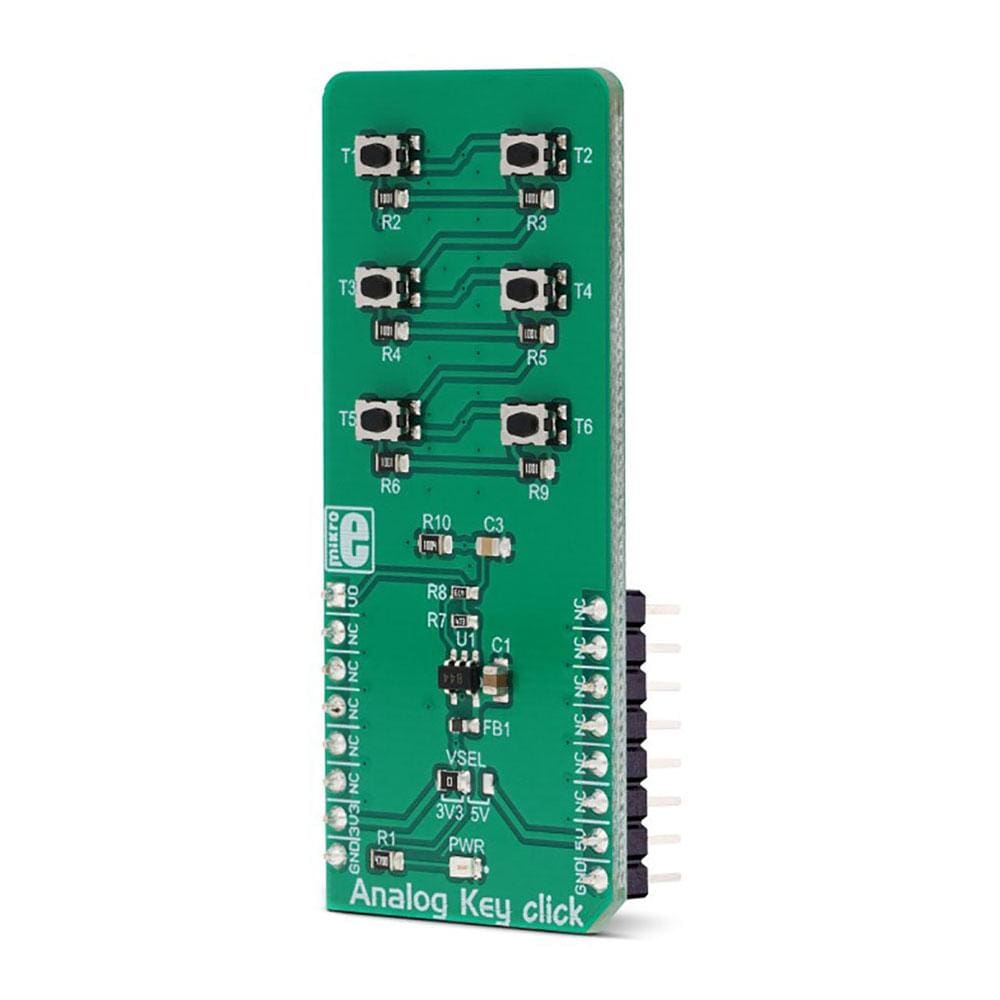
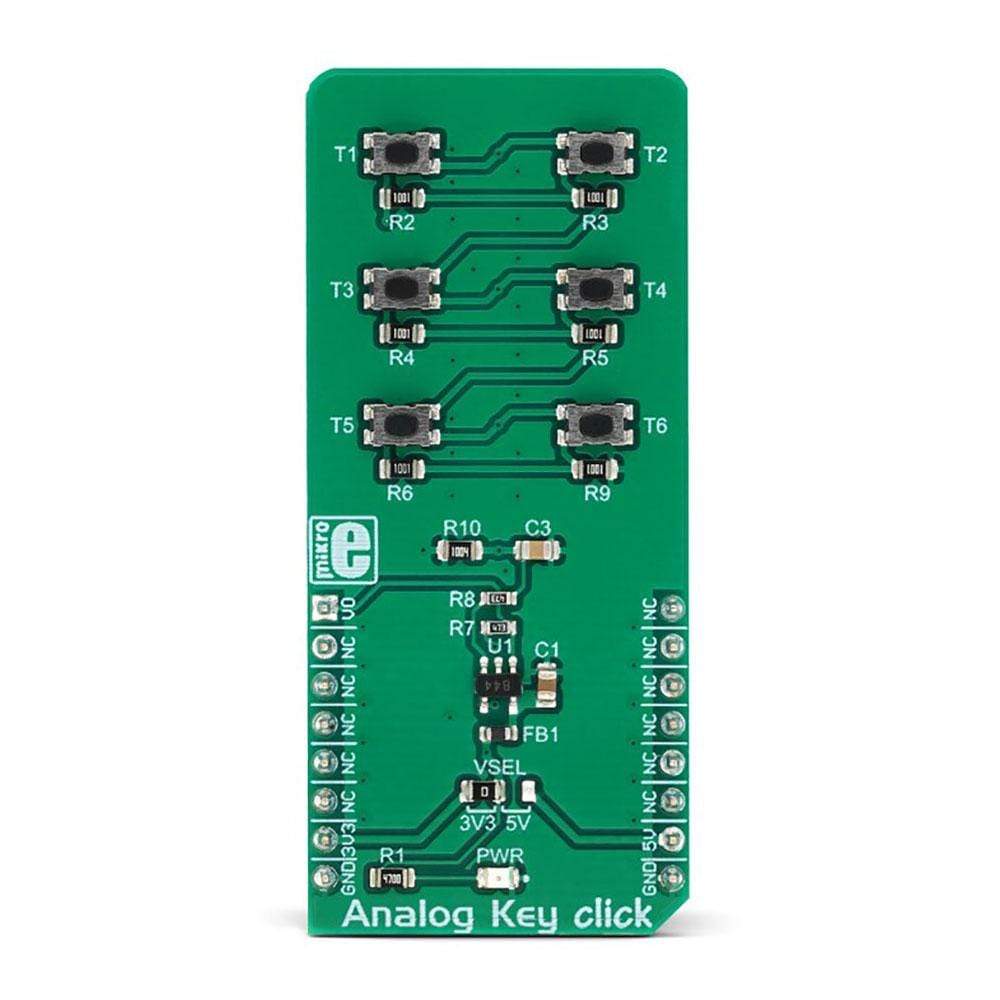
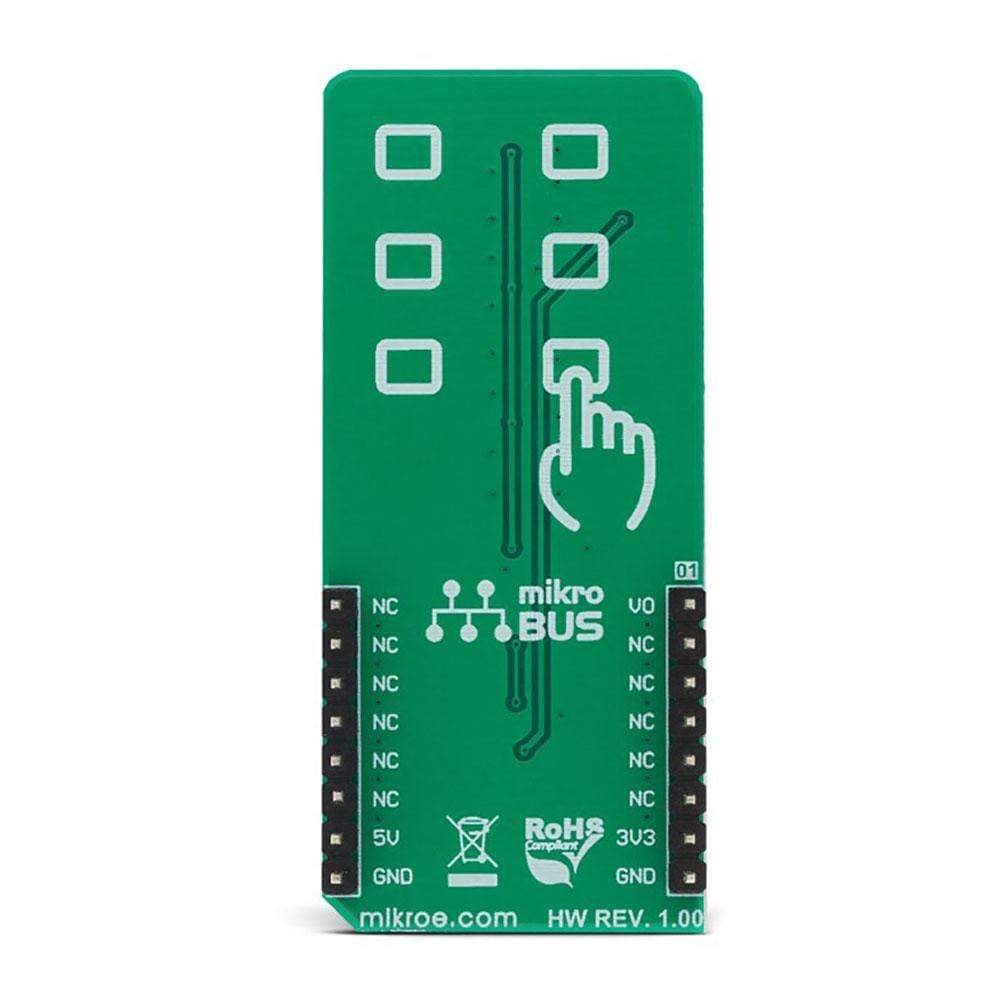
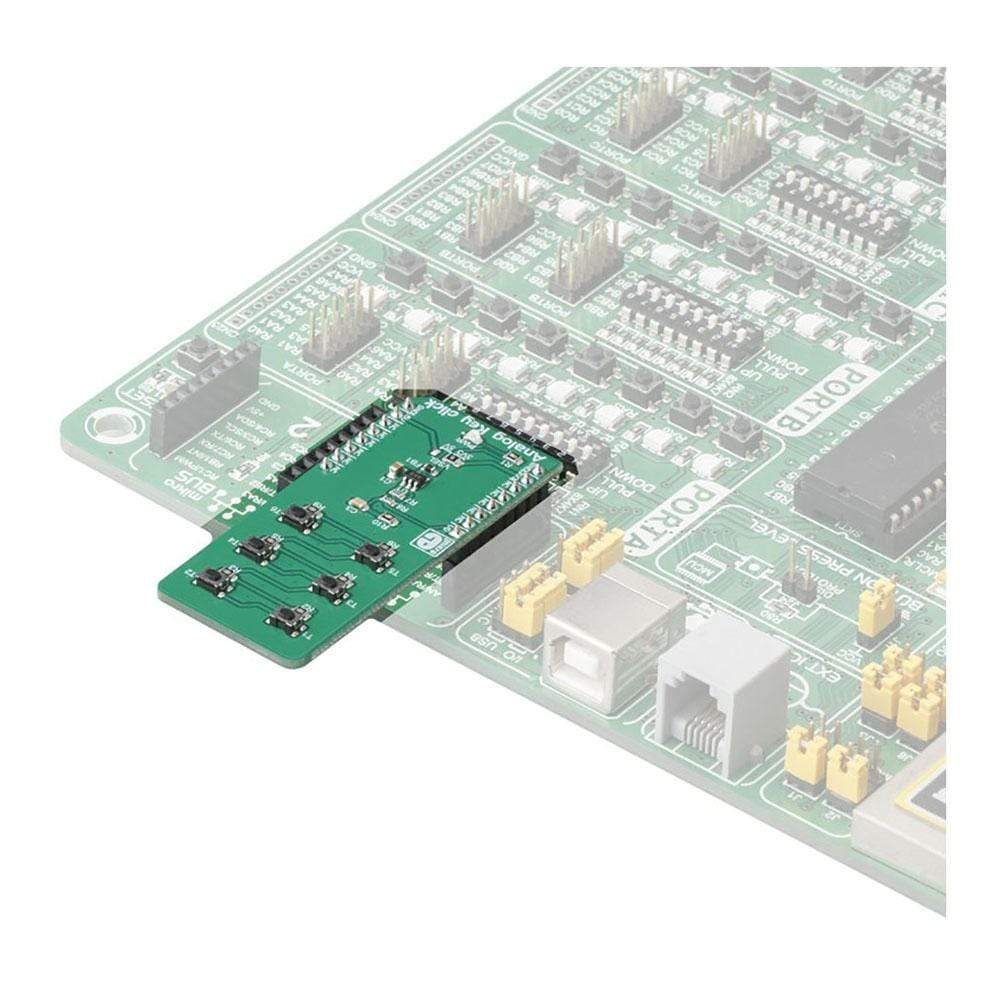
Overview
The Analog Key Click Board™ is an analogue keyboard on a Click Board™. It contains six tactile pushbuttons, used to select one of six different voltage levels. The idea behind this Click Board™ is very simple: six resistors form a voltage divider. The resistors are connected in series between the VCC and the GND. Each button selects one of the six middle taps, allowing six different voltage levels to be selected. The voltage is available at the AN pin of the mikroBUS, which is additionally protected by an operational amplifier, configured as a buffer. This allows both protection and a proper impedance at the analogue input pin of the microcontroller.
Downloads
Le Click Board™ Analog Key est un clavier analogique sur un Click Board™. Il contient six boutons-poussoirs tactiles, utilisés pour sélectionner l'un des six niveaux de tension différents. L'idée derrière ce Click Board™ est très simple : six résistances forment un diviseur de tension. Les résistances sont connectées en série entre le VCC et le GND. Chaque bouton sélectionne l'une des six prises du milieu, ce qui permet de sélectionner six niveaux de tension différents. La tension est disponible sur la broche AN du mikroBUS, qui est en outre protégée par un amplificateur opérationnel, configuré comme tampon. Cela permet à la fois une protection et une impédance appropriée sur la broche d'entrée analogique du microcontrôleur.
| General Information | |
|---|---|
Part Number (SKU) |
MIKROE-3409
|
Manufacturer |
|
| Physical and Mechanical | |
Weight |
0.023 kg
|
| Other | |
Country of Origin |
|
HS Code Customs Tariff code
|
|
EAN |
8606018714742
|
Warranty |
|
Frequently Asked Questions
Have a Question?
Be the first to ask a question about this.

